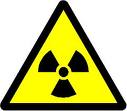Earthquake Hazards and Dangers of Radiation: The Los Alamos Nuclear Facility Lawsuit

The hearing of the lawsuit the Los Alamos Study Group (LASG), a non-profit nuclear education and watchdog organization, brought against the U.S. Department of Energy and the National Nuclear Security Administration, responsible for the Los Alamos National Laboratory (LANL), took place on the mornings of April 27 and May 2, 2011, in the Federal Court Building in Albuquerque before U.S. District Judge Judith Herrera. The case is important enough that [as of May 20] Judge Herrera is still deliberating her ruling.
The plaintiff’s attorney Thomas Hnasko explained that the Los Alamos Study Group wants to halt development of the Chemical and Metallurgy Research Replacement -Nuclear Facility (CMRR-NF or nuclear facility), where plutonium pits, the core of nuclear warheads, would be made at the Los Alamos National Laboratory, until a new Environmental Impact Statement (EIS) with alternatives is done.
Hnasko argued that the EIS done for the project in 2003 has changed so much, it is no longer the same project.
Plaintiff attorney Lindsay Lovejoy called to the stand Gregory Mello, executive director of LASG. Mello outlined the changes to the nuclear facility project from the original 2003 EIS:
● Costs have risen from original $350-500 million to $5-6 billion.
● Time to complete the nuclear facility has increased from 3 years to 12 years.
● Size of the building has doubled to 406,000 square feet.
● Acreage covered increased from 27 acres of land to 96 acres, including 13 acres for a 1,000-car parking lot.
● Structural steel requirements increased from 267 tons to approximately 18,500 tons.
● Excavation depth of the nuclear facility site has increased from 50 feet to 125
feet and calls for replacing the 50-foot layer of volcanic ash beneath the proposed building with concrete.
● Concrete and soil/grout requirements increased from 3,194 cubic yards to 371,000 cubic yards
● Climate-altering greenhouse gas emissions greatly increased, including
100,000 tons of carbon dioxide from concrete production.
● Excavation spoils increased from 190,000 cubic yards to 400,000 to 500,000 additional
cubic yards, which need to be trucked somewhere.
● Heavy truck trips would number anywhere from 20,000 to 110,000 on regional
and lab roads just for concrete ingredients.
● Construction employment increased from peak of 300 to 900 with impacts on
local housing and infrastructure.
● New structures not mentioned in the 2003 EIS include two concrete batch plants, a craft worker
facility, an electrical substation, a truck inspection facility, an additional office building, and a warehouse.
Plaintiff Counselor Lovejoy also called to the stand nuclear physicist Frank von Hipple, who testified that there was “ample time to revisit the question of alternatives to the CMRR-NF.” He cited the Administration’s 2010 Nuclear Posture Review Report that it is U.S. policy to “not develop new nuclear warheads.” He said the lifetime of plutonium pits is 100 years and with a reserve of 14,000 pits recovered from warheads at the Pantex warhead facility in Amarillo , “there will be no shortage of pits to reuse.”
“The earthquake hazard at the Los Alamos National Laboratory has been found to be much larger than had been believed,” von Hipple said, “now estimated to be about the same as that which was experienced at the Fukushima-Daiichi nuclear power plant in March.” He said the planned storage of 6,000 kilograms of plutonium makes “the off-site consequences of a plutonium fire potentially very large.”
Representing the defendants, Andrew Smith, a trial lawyer for the U.S. Justice Department in New Mexico, who had wanted to have the testimony of the witnesses stricken from the record, asked the witnesses only one question each, “Do you now have security clearance with LANL?” Their “No” answer seemed to satisfy Smith that because they were not privy to classified information, neither of them had the authority to speak.
Smith presented Judge Herrera with many legal cases that showed the precedence of “national security” over other considerations, for example, the U. S. Navy’s case for the necessity of sonar training versus the National Resources Defense Council’s complaint that sonar use caused the suffering and deaths of hundreds of whales, dolphins and other marine animals.
Erich Kuerschner, an economist and builder from Taos [50 miles downwind of Los Alamos ], was among those seated in the courtroom gallery to hear the proceedings. “To argue against nuclear weapons on environmental grounds is akin to objecting to Auschwitz because one is bothered by the smoke,” he said.
But to stop LANL’s nuclear facility project on a violation of environmental law, the plaintiff’s logic seems to go, is better than not trying to stop LANL at all.

